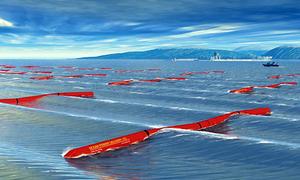EnergyTidal energy could provide half of Scotland’s power needs
A stretch of water off the north coast of the United Kingdom could provide enough energy to power about half of Scotland, engineers have found. Researchers have completed the most detailed study yet of how much tidal power could be generated by turbines placed in the Pentland Firth, between mainland Scotland and Orkney. They estimate 1.9 gigawatts (GW) could be available.

Power-generating "tidewater" snakes // Source: riverdale.edu
A stretch of water off the north coast of the United Kingdom could provide enough energy to power about half of Scotland, engineers have found.
Researchers have completed the most detailed study yet of how much tidal power could be generated by turbines placed in the Pentland Firth, between mainland Scotland and Orkney. They estimate 1.9 gigawatts (GW) could be available. The in-depth assessment by engineers at the Universities of Oxford and Edinburgh offers valuable insights into how to develop and regulate this clean energy resource effectively.
Fast currents
A University of Edinburgh release reports that the Pentland Firth is a prime candidate to house marine power projects because of its tidal currents, which are among the fastest in the British Isles.
Engineers say that their study improves on previous estimates of the generating capacity of turbines embedded in the Firth — ranging from 1 to 18 GW — which were too simplistic or based on inappropriate models.
Researchers calculated that as much as 4.2 GW could be captured, but because tidal turbines are not 100 percent efficient, they say that 1.9 GW is a more realistic target.
Turbine sites
To exploit the Firth’s full potential, turbines would need to be located across the entire width of the channel.
In order to minimize the impacts on sea life and shipping trade, a number of individual sites have been identified for development by the U.K. Crown Estate, which will lease these sites to tidal energy firms.
Researchers have pinpointed locations where turbines would need to be positioned for the Firth to meet its full energy production potential.
The research was commissioned and funded as part of the Energy Technologies Institute’s Performance Assessment of Wave and Tidal Array Systems project (PerAWAT).
